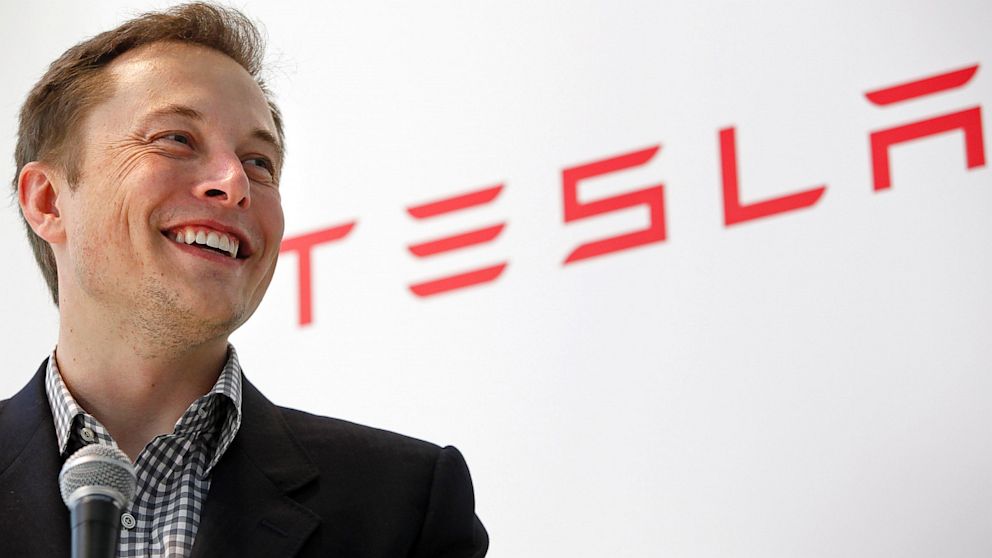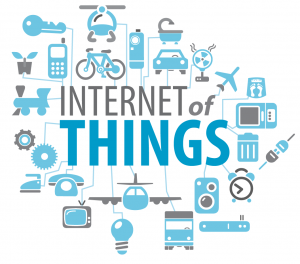Student
We can change the way we think!
Summary of “How Successful People Think”
Integrative thinking is in some way or another an art form, but also is something that can be learned, practiced, and built upon throughout a life time. I believe in order to become an integrative thinker we first need to learn how to think better. “How Successful People Think” by John C Maxwell is a book that addresses 11 skills of a good thinker possess, and how to adopt these skills. These 11 skills are:
1)Big picture thinking
2)Focused thinking
3)Creative thinking
4)Realistic thinking
5)Strategic thinking
6)Possibility thinking
7)Reflective thinking
8)Popular thinking
9)Shared thinking
10)Unselfish thinking
11)Bottom-line thinking
Maxwell’s quote “If you embrace unpopular thinking and make decisions based upon what works best and what is right rather than what is commonly accepted, know this: in your early years you won’t be as wrong as people think you are. In your later years, you won’t be as right as people think you are. And through all the years, you will be better than you thought you could be.”
Maxwell says we can develop these skills during ordinary daily routines. Does anyone have any ideas how they would practice one of the 11 skills in their daily life?
Practicing Integrative Thinking Skills

This week in class, we are discussing the art and science of integrative thinking. To learn more about integrative thinking, I explored online for relevant articles. On The Huffington Post’s website, I located an article entitled Becoming an Integrative thinker: The Keys to Success, by Roger Martin, the academic director of an institute of the University of Toronto’s Rotman School of Management and author of the article we read for class.
Martin uses the expression “opposable minds” to explain the decision-making styles of successful leaders; he explains that when faced with options, these individuals do not choose the lesser of two evils but instead synthesize a unique option that is superior to its alternatives.
More interestingly, in my opinion, he argues that integrative thinking is a skill rather than an innate ability—one that must be nurtured to develop, as opposed to one assigned by nature.
As I thought more about the prospect of developing one’s integrative thinking skills, I began to wonder what type of practice is best. Should one focus on case studies, or should one aim to tackle real-life problems? Should one type of practice precede the other, or is a mixture of the two optimal?
Lastly, do we already practice our integrative thinking skills more regularly than one might think?
“Cars You Can Drive Will Eventually Be Outlawed”

http://www.theverge.com/transportation/2015/3/17/8232187/elon-musk-human-drivers-are-dangerous
We discussed heavily in class the disruptive innovation of autonomous vehicles. What I found most interesting however was not the technology itself but the regulatory implications.
Elon Musk, CEO of Tesla Motors says that cars controlled by people will eventually be outlawed in favor of those controlled by robots. He compares it to that of the elevator where the development of simple circuitry led to the elevator operators’ extinction.
So when autonomous car adoption reaches a critical mass, will the government require car owners to purchase autonomous vehicles if they want to “drive” on main roads? Will the government provide a cash for clunkers program? Will they provide 0% interest loans to those who cannot afford the full cost for the sake of public safety? How do you think a government would even go about this?
AI + IoT = Good or Bad?
According to this article, the integration of artificial intelligence (AI) with the Internet of Things (IoT) is inevitable, and there are prominent people such as Stephen Hawking, Bill Gates, and Elon Musk that warn against what may result by the combination. Fears range from the simple (putting employees out of work) to the extreme (Terminator SkyNet scenarios), but there are also people like Kevin Hally (founding editor of Wired magazine) who see the integration of IoT and AI to bring huge benefits to business (i.e. cutting costs by automating tasks) as long as they remain “consciousness-free”.
With over 50 billion devices expected to be connected to the internet by 2020 (more than 7 times the entire human population as of now), what do you think the implications will be if billions of embedded devices are eventually connected to artificially intelligent machines? Do you think AI is still too far in the distant future to even worry about? And, arguably as important, how can AI become a disruptive innovation unto itself? Do you agree with Kevin Hally that soon start up businesses will start basing their business plans on “cognitizing” what was previously “electrified”, with AI eventually becoming a commodity like electricity currently is?
PlayStation Mobile Shutting Down..Reflections on the “Internet of Things”

As confirmed in this article, Sony has announced that it is shutting down its PlayStation Mobile service; this happened just ONE DAY after I recommended in my presentation last Tuesday that Sony use the service as part of its strategy to protect itself against new entrants such as OnLive that are attempting to disrupt the market. Launched in October 2012, the service will officially end on July 15, culminating in a mere existence of 2 years and 9 months (for those who weren’t in class for my presentation, PlayStation Mobile was basically a framework for an “app store” that hosted exclusive games and other content that catered to indie developers). A listing here shows that the service was compatible with 72 devices, including the PlayStation Vita and PlayStation TV, taking full advantage of the “Internet of Things”, or IoT. Yet, with such a broad range of compatibly and a strong brand name, the service was ultimately known for poor developer support, a weak game library, and a small user base.
In light of this failure by an established incumbent but the continued success of other services that take advantage of IoT devices (such as iOS, Android, and Valve’s Steam) and a wave of new entrants (such as OnLive, as from my presentation, and Nvidia’s Shield, as posted by James Brunetto), what do you think a company needs to do in order to achieve success and stay relevant with a service that is meant to be compatible on a wide range of popular devices? Was PlayStation Mobile not innovative enough? And what features would a service like this in the gaming industry need in order to truly be considered disruptive?
The Internet Of Things & Energy Costs
For my disruptive innovation project, I looked at “The Internet of Things,” one of the top disruptive innovations recently, and an idea that I was not familiar with. This concept is that of things all around us, from watches to refrigerators, being embedded with sensors that allow these devices to communicate and share data. In doing some further research, I found this article about how The Internet of Things can help companies slash their energy costs- a concept that I had no considered.
While I think many people focus on The Internet of Things as a way to make people more connected and make our lives easier, I don’t think there’s enough focus on the good that IOT can do. The article talks about how companies can use smart grids, which will run on the IOT, which allow energy distribution to be evaluated in real-time, rather than based on historical data. This will allow companies to more effectively manage their energy usage, thus saving them money and helping the environment through reduced energy usage/waste.
What other potential do you see for IOT savings money and doing good? Do you think there are applications for a smart grid in a smaller sense, rather than just for businesses?
Using Disruptive Innovation for Social Change
This article talks about how Mark W. Johnson (Clayton Christensen’s business partner) says that disruptive innovation is not about being better than what currently exists. He says disruptive innovation “transforms a complicated, expensive product into one that is easier to use or is more affordable than the one most readily available.You know an innovation is disruptive when a new population has access to products and services that previously were only affordable for the few or the wealthy.”
A subset of disruptive innovations called catalytic innovations is introduced and described as “providing good-enough solutions to inadequately addressed social problems.” An example would be the MinuteClinic which provides affordable walk-in health services for common health problems. The idea of the MinuteClinic lead to the creation of other walk-in clinics that serve people who cannot afford health care.
As business students we usually focus on the profits to be earned from a new idea or technology, but I think it’s interesting to look at the social changes we can achieve. What other examples can you think of where disruptive innovation was used for social causes? How do you think disruptive innovation can be used for social change in the future?
Collaboration and Disruptive Innovation
In this article by Vikram Jandhyala and Will Ludlam of the Seattle Times, the role of collaboration in disruptive innovation is investigated. The authors argue that without collaboration, people become frightened by how quickly things are changing–largely due to the fact that they are not included in the development of new innovations. Jandhyala and Ludlam argue that, using Washington State as an example, universities, businesses, media outlets, government agencies, etc. should work together to draw talent into the region and promote collaborative innovation. The authors argue that through collaboration, “disruption” will become “evolution,” in which all interested parties have a say in how to move forward and will be less caught up in the fast pace of change.
Do you think that by “forcing” disruptive innovation the value will be diminished? For example, instead of allowing disruptive innovation to “come about” naturally and without the use of a think tank or incubator, are the innovations are more meaningful? What challenges do you see in drawing talent to a particular region, business or university?
Embracing Change through Constant Learning

Last week in class, we discussed disruptive innovation at length, and we concluded that a key to surviving disruption is to quickly identify and respond to it. Companies that fail at either of these tasks may lose considerable market share, cash, talent, and value in the eyes of investor.
Because of our discussion, I became interested in identifying how a company can continually improve its business models to stay relevant in dynamic markets. My interest resulted in an internet search, and that search led me to an article on Bain & Company’s website entitled Repeatability: How companies create enduring businesses in a world of constant change. The article identifies a number of key principles that successful and enduring companies have in common—principles which result in what the authors call a “repeatable model” than embraces all aspects of change.
The principle that I found most interesting to examine was principle three of three: systems for closed-loop learning. These learning systems are driven by employee and customer input and are (I assert) representative of a Kaizen approach to process improvement. For a business model to be “repeatable,” it must not only encourage regular and proactive small-scale innovations, but also “develop early-warning devices that allow them to anticipate fundamental change in the marketplace.” I think that this latter point helps mitigate the need for forced, reactive changes to a company’s business model.
With the principle of closed-loop learning systems in mind, how might a start-up’s method of anticipating fundamental changes differ from a large corporation’s? What are the benefits of having a dedicated “office of restructuring” versus a distributed approach to innovation and threat identification? Why is employee empowerment important to a company’s culture of innovation?
Surviving Disruption

We discussed extensively in class about what disruptive innovation is and provided examples of disruptive innovation. We did not cover as much on how to survive disruptive innovation.
In the article that I’ve linked, Wessel and Christensen suggest that incumbents assess three factors to determine if they can survive the disruptive innovation:
1. Identify the strengths of your disrupter’s business model
Are there disadvantages in the disrupter’s business model that offsets their advantage? This will help determine the types of customers the disrupter will and won’t attract so the incumbent can figure if those customers are worth retaining.
2. Identify your own relative advantages
An incumbent must know its own business when a disrupter begins to disrupt so that it can determine how best to compete with them.
3. Evaluate the conditions that would help or hinder the disrupter from co-opting your current advantages in the future
So how can the incumbent better serve its customers to make the disrupter less attractive, thereby creating barriers for the customer to switch.
Do you think these three are the best factors to determine how an incumbent may be able to survive a disrupter? Do you think there are other factors that the article does not cover?






